-
 Bitcoin
Bitcoin $119,448.2396
0.27% -
 Ethereum
Ethereum $2,992.9919
0.78% -
 XRP
XRP $2.9074
1.58% -
 Tether USDt
Tether USDt $1.0001
0.00% -
 BNB
BNB $687.9097
-0.40% -
 Solana
Solana $161.5804
-0.47% -
 USDC
USDC $0.9998
0.01% -
 Dogecoin
Dogecoin $0.1948
-2.10% -
 TRON
TRON $0.3013
-0.08% -
 Cardano
Cardano $0.7286
-3.16% -
 Hyperliquid
Hyperliquid $47.3153
-3.81% -
 Stellar
Stellar $0.4543
-9.79% -
 Sui
Sui $3.8809
5.63% -
 Chainlink
Chainlink $15.6262
-0.55% -
 Hedera
Hedera $0.2368
-5.31% -
 Bitcoin Cash
Bitcoin Cash $501.2030
-0.80% -
 Avalanche
Avalanche $21.0650
-1.43% -
 UNUS SED LEO
UNUS SED LEO $9.0006
-0.39% -
 Shiba Inu
Shiba Inu $0.0...01310
-1.90% -
 Toncoin
Toncoin $3.0040
1.56% -
 Litecoin
Litecoin $93.8936
-1.20% -
 Monero
Monero $341.8918
1.27% -
 Polkadot
Polkadot $3.9087
-3.05% -
 Uniswap
Uniswap $8.9599
4.78% -
 Dai
Dai $0.9999
0.02% -
 Ethena USDe
Ethena USDe $1.0005
-0.02% -
 Bitget Token
Bitget Token $4.3954
-0.14% -
 Pepe
Pepe $0.0...01207
-2.26% -
 Aave
Aave $314.5223
1.72% -
 Bittensor
Bittensor $408.6988
2.76%
What is large transfer monitoring? How to set up alerts?
Large transfer monitoring tracks significant blockchain transactions, aiding investors and analysts in understanding market trends and potential security threats.
Apr 12, 2025 at 07:08 am
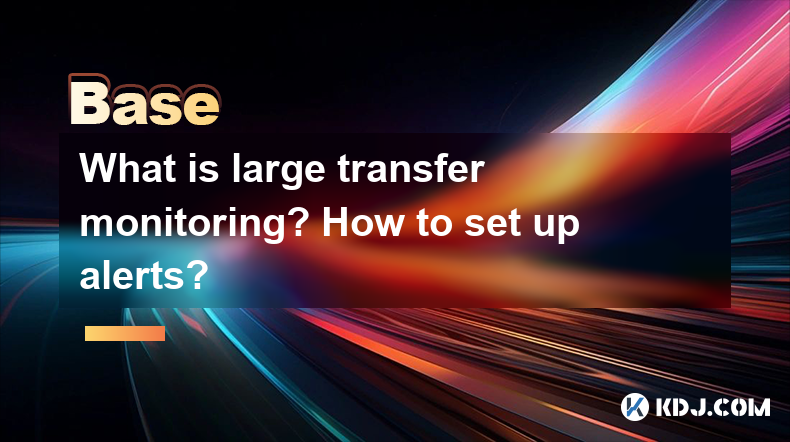
What is Large Transfer Monitoring?
Large transfer monitoring is a crucial tool within the cryptocurrency ecosystem that tracks and alerts users about significant transactions on blockchain networks. This monitoring system is essential for various stakeholders, including investors, traders, and blockchain analysts, as it helps them stay informed about substantial movements of digital assets. These large transfers can indicate significant market movements, potential insider trading, or even security breaches, making it a vital aspect of cryptocurrency surveillance.
The primary purpose of large transfer monitoring is to provide real-time or near-real-time information about transactions that exceed a predefined threshold. For instance, if a user sets an alert for transfers over 1,000 BTC, they will receive notifications whenever such a transaction occurs on the Bitcoin network. This information can be used to analyze market trends, detect unusual activity, or simply keep track of whale movements—large holders who can influence market dynamics.
Importance of Large Transfer Monitoring in Cryptocurrency
In the volatile world of cryptocurrencies, large transfer monitoring plays a significant role in maintaining transparency and security. By tracking significant transactions, users can gain insights into the behavior of major players in the market. For example, if a large amount of a particular cryptocurrency is transferred to an exchange, it might signal an upcoming sell-off, which could affect the market price.
Moreover, large transfer monitoring can be instrumental in identifying potential security threats. If an unusually large amount of cryptocurrency is moved from a wallet that is known to belong to a reputable organization, it might indicate a hack or unauthorized access. Early detection through large transfer monitoring can help mitigate the damage by alerting the affected parties and the broader community.
How to Set Up Alerts for Large Transfers
Setting up alerts for large transfers involves several steps, which can vary depending on the platform or tool you are using. Below is a general guide on how to set up such alerts using popular blockchain analytics platforms like CryptoQuant or Glassnode.
Using CryptoQuant
- Navigate to the Alerts Section: Log into your CryptoQuant account and go to the 'Alerts' section.
- Select the Cryptocurrency: Choose the cryptocurrency you want to monitor, such as Bitcoin or Ethereum.
- Set the Threshold: Decide on the threshold for the transaction amount. For example, set it to 1,000 BTC.
- Choose the Notification Method: Select how you want to receive the alerts, such as email, SMS, or push notifications.
- Confirm the Alert: Review your settings and confirm the alert. You will now receive notifications whenever a transaction exceeds your specified threshold.
Using Glassnode
- Access the Alerts Page: Log into Glassnode and navigate to the 'Alerts' page.
- Choose the Asset: Select the cryptocurrency you wish to monitor.
- Define the Alert Type: Choose 'Large Transaction' as the alert type.
- Set the Threshold: Enter the transaction amount threshold, such as 10,000 ETH.
- Select Notification Preferences: Decide on your preferred notification method, such as email or Telegram.
- Save the Alert: Review and save your alert settings. You will be notified when transactions exceed your set threshold.
Tools and Platforms for Large Transfer Monitoring
Several tools and platforms are available for large transfer monitoring, each offering unique features and capabilities. Some of the most popular ones include:
- CryptoQuant: Known for its comprehensive data and analytics, CryptoQuant offers detailed insights into large transactions across various cryptocurrencies.
- Glassnode: This platform provides advanced on-chain metrics and real-time alerts for large transfers, making it a favorite among professional traders and analysts.
- Whale Alert: A user-friendly tool that focuses specifically on tracking large transactions across multiple blockchains, providing instant notifications via social media and other channels.
- Blockchain.com: Offers a simple yet effective explorer that can be used to monitor large transactions on the Bitcoin and Ethereum networks.
Benefits of Using Large Transfer Monitoring
Large transfer monitoring offers several benefits to users within the cryptocurrency ecosystem. Firstly, it enhances market transparency by providing real-time data on significant transactions. This transparency can help users make more informed decisions based on the movements of large holders.
Secondly, it aids in risk management. By monitoring large transfers, users can identify potential market manipulations or security breaches early on, allowing them to take appropriate action to protect their investments.
Lastly, large transfer monitoring can be a valuable tool for research and analysis. Analysts can use the data to study market trends, understand the behavior of major players, and develop more accurate predictive models.
Practical Applications of Large Transfer Monitoring
Large transfer monitoring has several practical applications within the cryptocurrency space. For traders, it can be a signal to adjust their positions based on the movements of large holders. For example, if a significant amount of Bitcoin is transferred to an exchange, it might indicate an upcoming sell-off, prompting traders to sell their holdings or adjust their strategies accordingly.
For blockchain analysts, large transfer monitoring can provide valuable data for research. By tracking the flow of large transactions, analysts can gain insights into the distribution of wealth within the network, identify potential points of centralization, and study the impact of large holders on market dynamics.
For security professionals, large transfer monitoring is essential for detecting and responding to potential security breaches. If a large amount of cryptocurrency is moved from a known wallet without authorization, it can trigger an immediate investigation and response, helping to minimize the impact of the breach.
Frequently Asked Questions
Q: Can large transfer monitoring be used to predict market movements?
A: While large transfer monitoring can provide insights into the behavior of large holders, it is not a foolproof method for predicting market movements. It should be used in conjunction with other market analysis tools to make more informed decisions.
Q: Are there any privacy concerns associated with large transfer monitoring?
A: Yes, large transfer monitoring can raise privacy concerns, as it involves tracking transactions on public blockchains. Users should be aware that their transactions can be monitored and take steps to protect their privacy, such as using privacy-focused cryptocurrencies or mixing services.
Q: How can I ensure the accuracy of large transfer monitoring alerts?
A: To ensure the accuracy of large transfer monitoring alerts, it is essential to use reputable platforms and regularly update your alert settings. Additionally, cross-referencing data from multiple sources can help verify the accuracy of the alerts.
Q: Can large transfer monitoring be used for all cryptocurrencies?
A: Large transfer monitoring can be used for most cryptocurrencies that operate on public blockchains. However, the effectiveness and availability of monitoring tools may vary depending on the specific cryptocurrency and the platform being used.
Disclaimer:info@kdj.com
The information provided is not trading advice. kdj.com does not assume any responsibility for any investments made based on the information provided in this article. Cryptocurrencies are highly volatile and it is highly recommended that you invest with caution after thorough research!
If you believe that the content used on this website infringes your copyright, please contact us immediately (info@kdj.com) and we will delete it promptly.
- Yukon Handgames: Carcross First Nation's Cultural Renaissance
- 2025-07-15 16:50:12
- Strategy's Bitcoin Bonanza: 600,000 BTC and Beyond!
- 2025-07-15 16:30:12
- Blockchain, Bitcoin, and Treasury Strategy: A New Era of Finance
- 2025-07-15 17:00:12
- Bitcoin's Wild Ride: Rally, Record Highs, and the Inevitable Profit Taking
- 2025-07-15 15:10:11
- XRP, Bitcoin Dominance, and Altcoins: Decoding the Future of Crypto
- 2025-07-15 15:30:11
- Bitcoin Rally Cools: Profit-Taking or Just Catching Its Breath?
- 2025-07-15 15:10:11
Related knowledge
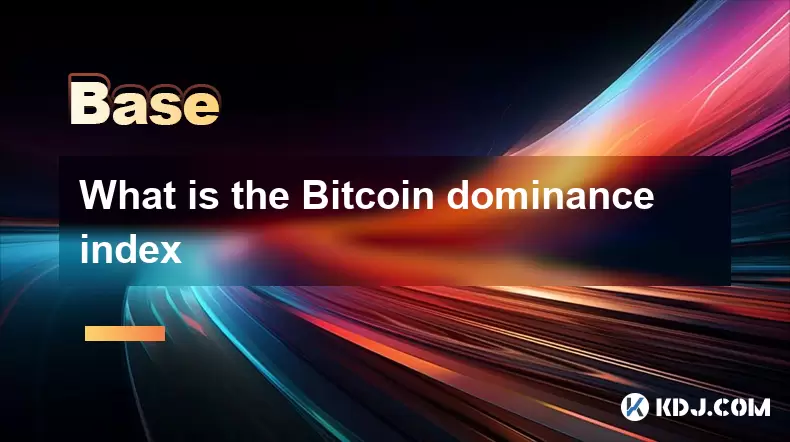
What is the Bitcoin dominance index
Jul 12,2025 at 10:35pm
Understanding the Bitcoin Dominance IndexThe Bitcoin Dominance Index, often abbreviated as BTC.D, is a metric used to measure Bitcoin's market capital...
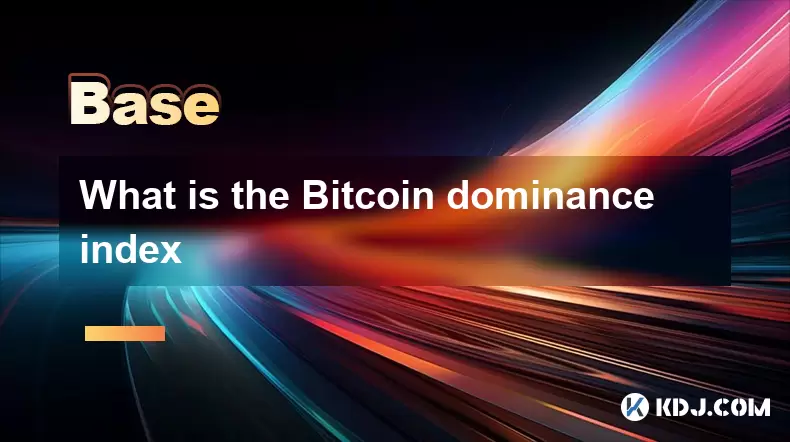
What is the Bitcoin dominance index
Jul 11,2025 at 04:29am
What is the Bitcoin Dominance Index?The Bitcoin Dominance Index is a metric used to gauge Bitcoin's market capitalization relative to the total market...

Can crypto be a hedge against inflation
Jul 14,2025 at 12:21am
Understanding the Concept of Hedging Against InflationInflation refers to the general increase in prices and fall in the purchasing value of money ove...
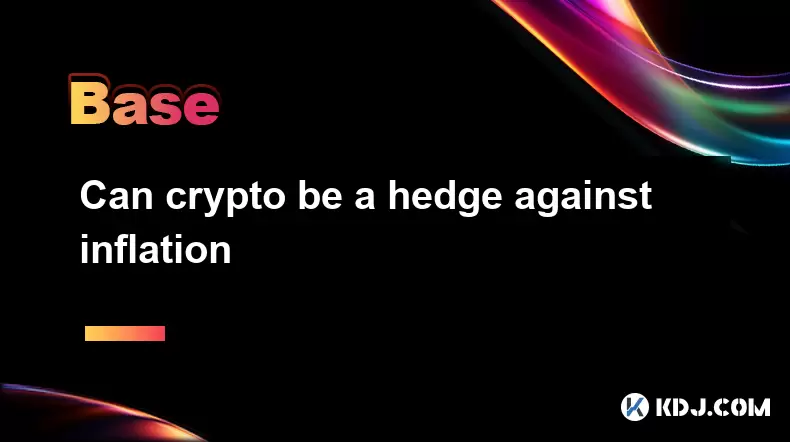
Can crypto be a hedge against inflation
Jul 12,2025 at 12:07pm
Understanding the Role of Blockchain in Decentralized Finance (DeFi)Blockchain technology serves as the backbone of decentralized finance, offering a ...
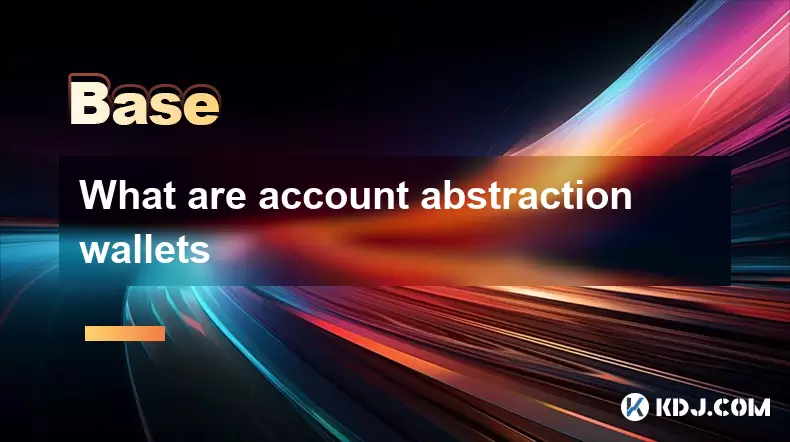
What are account abstraction wallets
Jul 13,2025 at 01:43am
Understanding the Concept of Account AbstractionAccount abstraction is a term frequently used in the Ethereum ecosystem, particularly within discussio...
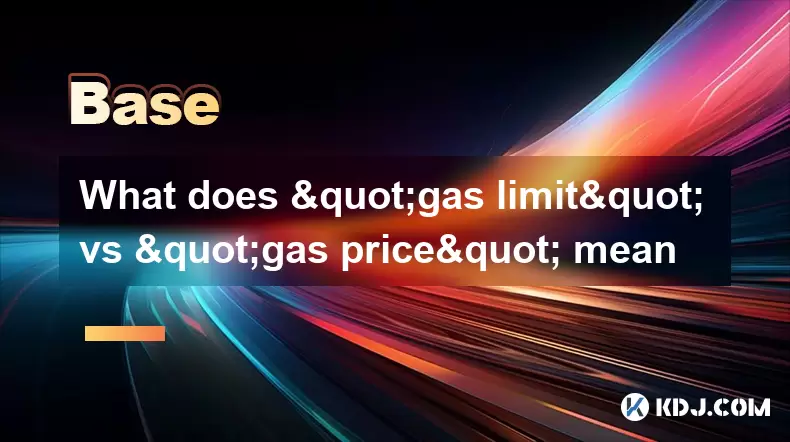
What does "gas limit" vs "gas price" mean
Jul 13,2025 at 04:00am
Understanding the Basics of Gas in Blockchain TransactionsIn the Ethereum and other EVM-compatible blockchains, every transaction requires computation...

What is the Bitcoin dominance index
Jul 12,2025 at 10:35pm
Understanding the Bitcoin Dominance IndexThe Bitcoin Dominance Index, often abbreviated as BTC.D, is a metric used to measure Bitcoin's market capital...

What is the Bitcoin dominance index
Jul 11,2025 at 04:29am
What is the Bitcoin Dominance Index?The Bitcoin Dominance Index is a metric used to gauge Bitcoin's market capitalization relative to the total market...

Can crypto be a hedge against inflation
Jul 14,2025 at 12:21am
Understanding the Concept of Hedging Against InflationInflation refers to the general increase in prices and fall in the purchasing value of money ove...

Can crypto be a hedge against inflation
Jul 12,2025 at 12:07pm
Understanding the Role of Blockchain in Decentralized Finance (DeFi)Blockchain technology serves as the backbone of decentralized finance, offering a ...

What are account abstraction wallets
Jul 13,2025 at 01:43am
Understanding the Concept of Account AbstractionAccount abstraction is a term frequently used in the Ethereum ecosystem, particularly within discussio...

What does "gas limit" vs "gas price" mean
Jul 13,2025 at 04:00am
Understanding the Basics of Gas in Blockchain TransactionsIn the Ethereum and other EVM-compatible blockchains, every transaction requires computation...
See all articles

























































































